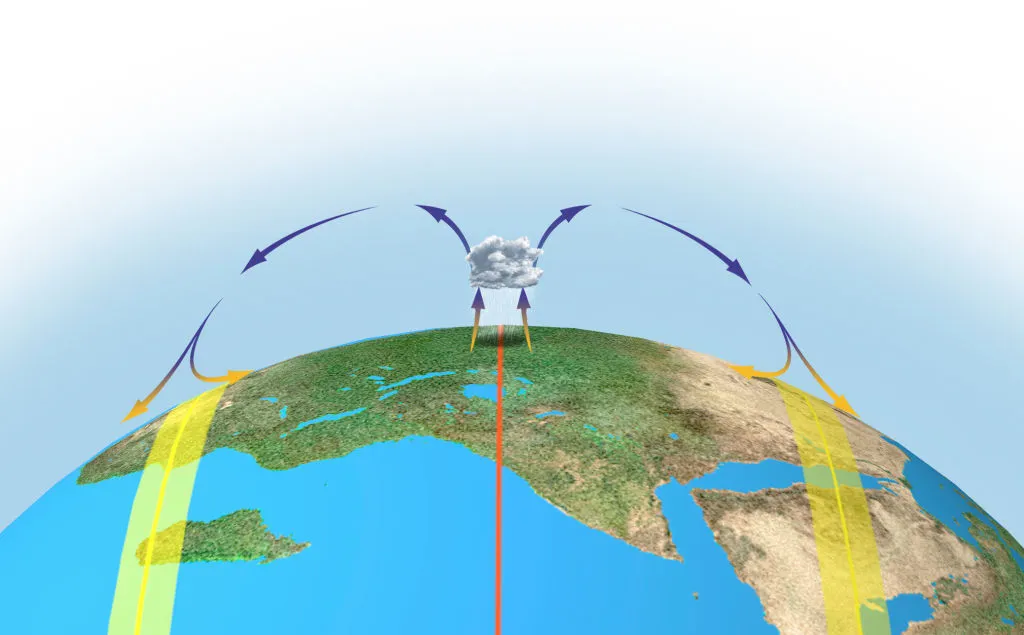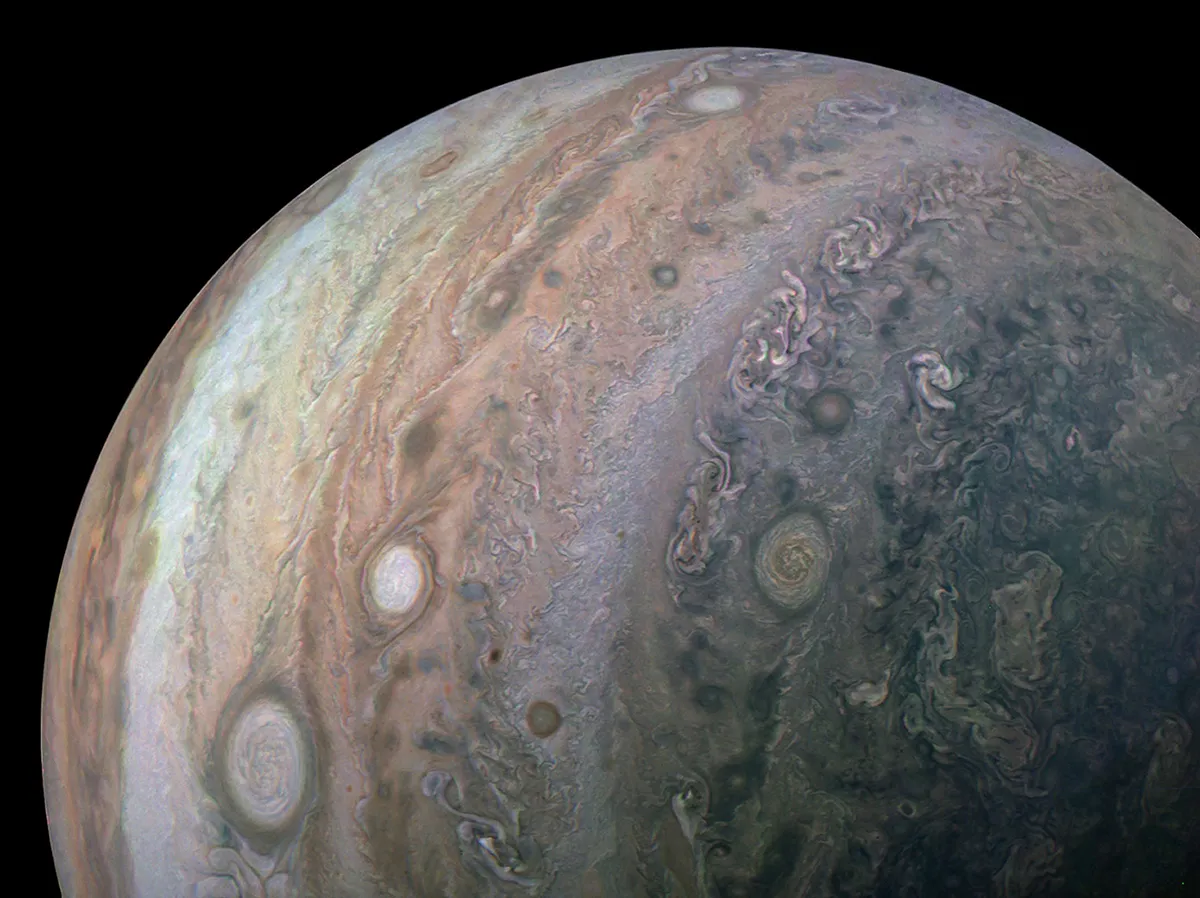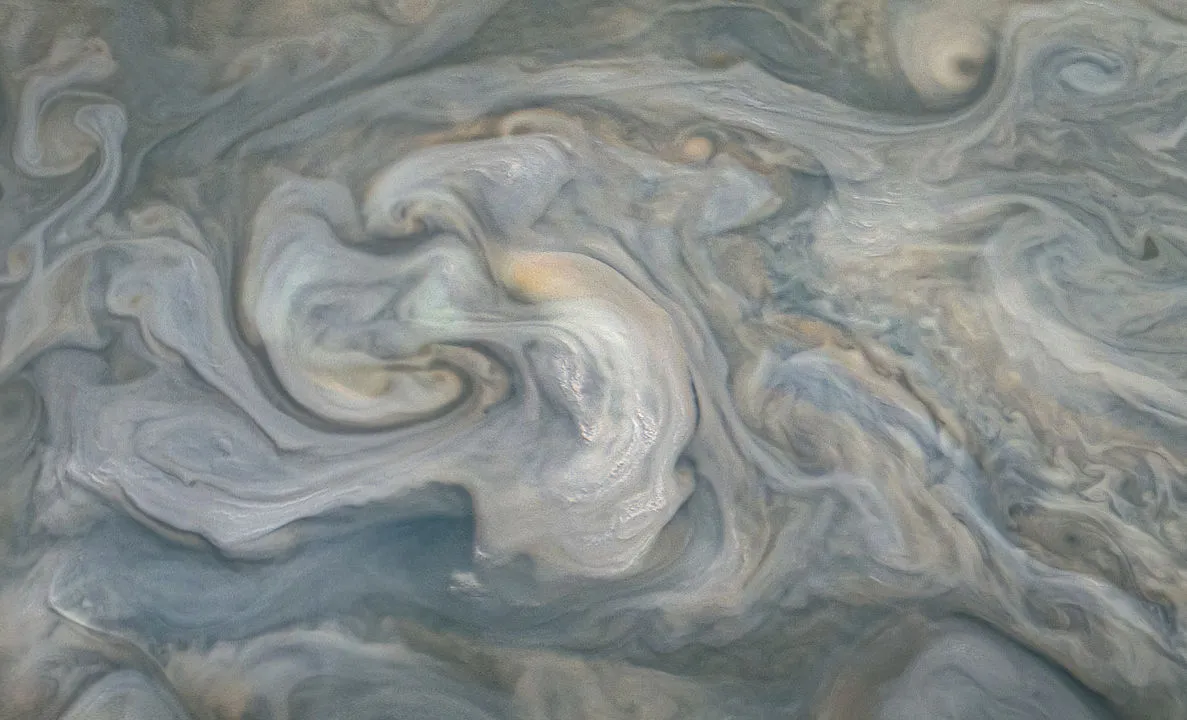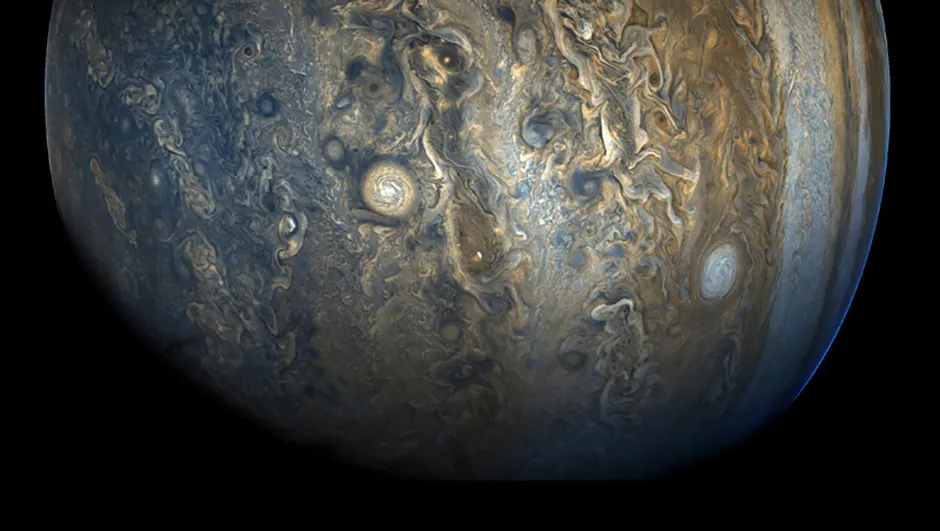The pattern of circulation in Earth’s atmosphere is pretty straightforward.
The Sun warms air around the equator that rises, then rolls over through high altitudes before sinking down to the ground at latitudes near 30° north and south (around a third of the way to the poles).
From there the moving air blows across Earth’s surface back to the equator.
This is a giant convection current – just like the one that churns over the radiator in your living room – and the pair straddling Earth’s equator are called the Hadley cells.
More from Lewis Dartnell:
- How thick is Europa's icy crust?
- Could humans be too heavy to land on Mars?
- How did Saturn's moon Titan form?

There are three great atmospheric circulation cells in each of Earth’s hemispheres.
The middle cell of each trio (called the Ferrel cell) is driven round by its neighbours like a cog.
Since all of this results in a flow of the atmosphere across latitudes between the equator and pole, the system is known as meridional circulation and it creates the prevailing winds, such as the trade winds and westerlies.
Jupiter's belts and zones

The stripey appearance of Jupiter is also believed to be due to meridional circulation in the atmosphere, but this is much more obvious than on Earth because the rising and sinking regions of Jupiter’s atmosphere cause conspicuous differences in the cloud layers and colours.
The horizontal pale ‘zones’ are caused by upwelling and the formation of high-altitude ammonia ice, and the ‘belts’ are ruddy-coloured clouds where the air is descending. There are also powerful jet streams in between.
Beneath Jupiter's clouds

What we don’t know, however, is what happens to these circulation cells deep in Jupiter’s interior. There’s no solid lower boundary like there is with Earth’s surface.
Keren Duer, at the Weizmann Institute of Science in Israel, and her team used data returned by the Juno mission to try and find out.
Since 2016, when it arrived at Jupiter, NASA’s probe has been measuring the light being reflected off the gas giant at different wavelengths, including infrared and microwave.
Any light that’s able to penetrate the top cloud layer allows us, to some degree, to peer into the planet’s interior.
By looking at the microwave data from Juno, the team was able to track the ammonia in Jupiter’s atmosphere.

This revealed the presence of a series of regions of upwelling and downwelling hidden beneath the visible upper clouds in the mid-latitudes of Jupiter – between 60° south and 60° north.
These form 8 deep circulation cells in each hemisphere of the planet, like a whole set of rollers side-by-side.
And, in a similar way to the middle Ferrel cell in each of Earth’s hemispheres, Jupiter’s mid-latitude circulation cells are driven by active convection at the equator.
However, while Earth only has one Ferrel cell in each hemisphere, Jupiter has eight due to its larger size and faster spin.
Duer’s team was able to trace these deep meridional circulation cells by observing ammonia in the microwave data.
This only allows detection down to a few hundred kilometres below the cloud decks, so we know Jupiter’s Ferrel cells extend at least as far as that.
It’s not the whole story, but it goes a long way towards understanding the atmospheric dynamics hidden beneath Jupiter’s clouds.
Lewis Dartnellwas reading Evidence for multiple Ferrel-like cells on Jupiter by Keren Duer et al. Read it online at arxiv.org.
This article originally appeared in the January 2022 issue of BBC Sky at Night Magazine.
